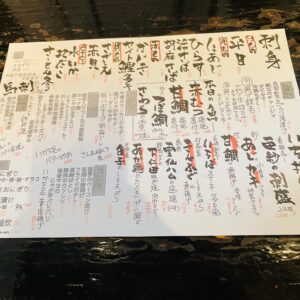Basic knowledge when foreigners go to izakaya No.1
Table of contents
1. Izakaya is Japanese food culture
2. In cases only the Japanese menu
3. “Otoshi (Appetizer)” problem
4. What to do if the price is not written
5. Sake that goes well with seafood
1. Izakaya is Japanese food culture
If a foreigner comes to Japan for a sightseeing trip, I recommend going to an “Izakaya.” Izakaya is a place where you can eat a variety of foods, and many of them are reasonably priced. Of course, there are various types of alcohol. I also love izakaya and have been to many izakayas all over Japan.
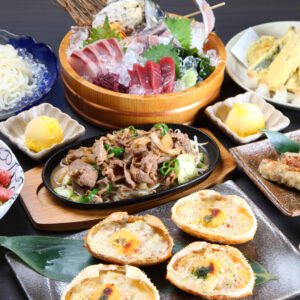
Izakaya is considered a restaurant close to Pub, Tapas bar, Tavern, etc. However, we can say that the izakaya, with its great meal menus, is unique to Japan compared to these bars, which are mainly alcoholic beverages. As with Karaoke, Izakaya can be one of the Japanese cultures, considering that it can be understood in English. In other words, izakaya is the best place to learn and experience Japanese food culture. The Japan Tourism Agency also recommends foreign tourists go to izakaya.
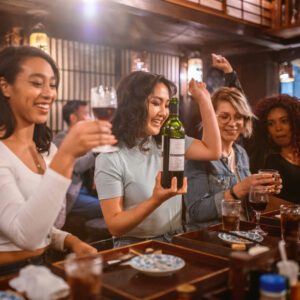
Izakaya is said to have started in the Edo period (1603-1868). However, it was initially served mainly with alcohol, such as in Pubs, Tapas bars, and Taverns. At first, the liquor store only served sake, but the izakaya offered liquor appetizers. In other words, the current izakaya has increased the types of meals it provides.
However, there are some things that foreigners should be aware of when going to an izakaya. I want to mention what I think about the precautions.
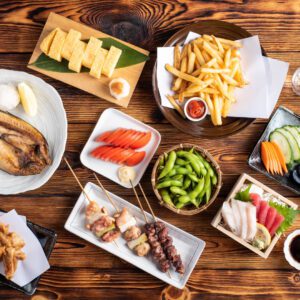
2. In cases only the Japanese menu
The biggest problem for foreigners who can’t read Japanese is how to place an order when they enter an izakaya that has only Japanese menus. Not only izakaya but there are overwhelmingly many restaurants in Japan that do not have foreign language menus.

For example, looking at the Tabelog of Japan’s largest gourmet site, only 2.1% (17,046) of the 810,823 restaurants registered in the Tabelog nationwide have an English menu. If we limit it to an izakaya, the percentage will rise slightly to 4.9% (5,936 out of 121,408) throughout Japan. Even if you look at the izakaya in Tokyo, only 10.2% (2,663 out of 26,024) have an “English menu.” As you can see from these data, most izakaya only has Japanese menus. With this, foreigners who cannot read Japanese cannot place an order.
So what should foreigners who can’t read Japanese do if they only have a Japanese menu at an izakaya?
Solution 1
First, most foreigners practice pointing to a menu with a photo and ordering or asking izakaya waiters/waitresses.
If there is a picture on the menu, you can order the food you want to order, so you should be fine. However, some izakaya has daily recommended menus written on paper or on the wall. In most cases, there is no photo.
Many izakayas with photo menus are chain stores. I will explain the reason later, but I would like you to go to a privately owned store rather than a chain store.
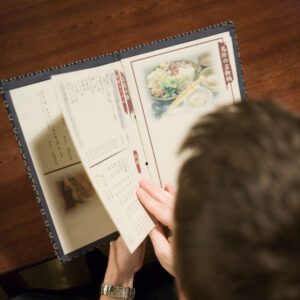
If you are still looking for a photo on the izakaya menu, foreign-speaking waiters/waitresses will help you order. However, no waiters/waitresses can speak a foreign language. In that case, you will not be able to communicate, and you will often not be able to order food.
Therefore, “Solution 1” depends on the izakaya, after all. There is only a solution if you have a photo menu or no waiters/waitresses who can speak a foreign language.
Solution 2
I want to recommend Solution 2. It’s about remembering the ordering pattern at the izakaya. When Japanese people order food at an izakaya, many people use the terms “Moriawase (platter)” and “Kyo no Osusume (today’s recommendations).” For example, the words “Sashimi Moriawase (platter)” (“Otsukuri Moriawase” in Kansai) and “Sashimi no Kyo no Osusume (today’s recommendation for sashimi)” (“Otsukuri no Kyo no Osusume” in Kansai). Besides, ordering with words such as “Yakitori Moriawase (platter),” “Oden Moriawase (platter),” and “Kyo Ichiban no Osusume (today’s best recommendation)” is a widespread way of ordering.
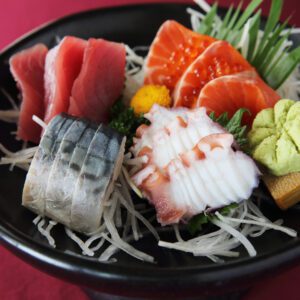


“Moriawase (platter)” is to serve several kinds of food decided by the izakaya on one plate. Even if it’s not on the menu, when you say “Moriawase (platter),” many izakayas serve assorted dishes. As mentioned above, the foods that can be ordered by “platter” are “Sashimi Moriawase (platter),” “Yakitori Moriawase (platter),” and “Oden Moriawase (platter).” There are other Moriawase like “Zensai Moriawase (appetizer platter),” “Kushiage Moriawase (platter),” “Motsuyaki Moriawase (roast giblets platter),” “Yakimono Moriawase (roasted food platter),” “Tempura Moriawase (platter),” “Agemono Moriawase (Fried food platter),” “Wiener Moriawase (Vienna sausage platter),” “cheese Moriawase (platter),” “Tsukemono Moriawase (pickled food platter)” and so on. Sometimes, you can order with the words “Today’s recommended platter.”
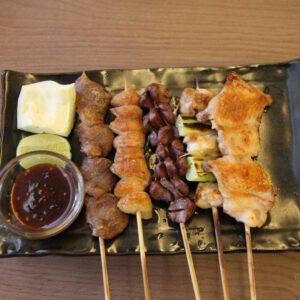
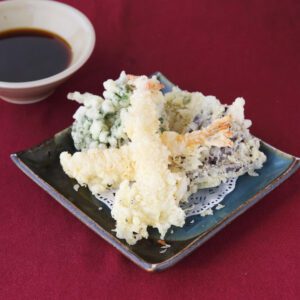
When ordering in the form of “Moriawase (platter)” and “Kyo no Osusume (today’s recommendations), you must tell the izakaya in advance about the food you cannot eat. Writing it on paper and handing it over is a good idea if you speak something other than Japanese. On the other hand, if you have a favorite food, tell it first, and it may be included in the “Moriawase (platter).” Suppose the price of your favorite food is high. In that case, it will not be included in the “Moriawase (platter)” and must be ordered separately. For example, expensive seafood such as sea urchins and abalone are rarely included in the “sashimi platter.”
The word “Omakase (a meal to be selected by the chef)” is in a similar ordering method. It means a meal to be selected by the chef. However, although the ” Omakase ” ordering method is standard at sushi restaurants, it is rarely seen at an izakaya. The izakaya has various menus, including seafood, meat, and vegetables. There are probably too many menus for “Omakase.”
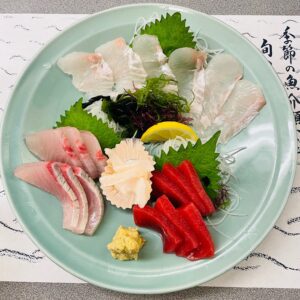
In addition to ordering “Moriawase (platter)” and “Kyo no Osusume (today’s recommendations),” you can also order “course meals.” Even in izakaya, many chain stores have food courses such as Yen 3,000 courses and Yen 4,000 courses. There is also an all-you-can-drink course. However, if you cannot read Japanese, you will not know the contents of the course meal. In addition, small groups such as 1-3 people may be unable to order course meals, or reservations may be required.
I don’t like chain izakaya, so I have rarely ordered “course meals” at an izakaya. This is because there are few “course meals” at izakaya under private management except for banquets. I’ll explain later why I don’t like chain taverns so much.
Positive
The advantage of ordering by “Moriawase (platter)” and “Kyo no osusume (today’s recommendations)” is that even if you can’t read the Japanese menu, you can order food at an izakaya if you remember the minimum word of Japanese. The minimum Japanese is “sashimi 刺身”, “yakitori 焼き鳥”, “oden おでん”, “zensai 前菜”, “kushiage 串揚げ”, “motsukiyaki もつ焼き”, “yakimono 焼き物”, “tempura 天ぷら”, “agemono 揚げ物”, “Wiener ウィンナー”, “cheese チーズ”, “tsukemono 漬物”.
Also, in the case of “Moriawase (platter),” it is a good point that you can eat various kinds of food little by little. For example, if two people order a “sashimi platter,” they can eat 3-6 types of seafood sashimi for about Yen 1,000 to Yen 3,000. On the other hand, if it is a single item, one kind of sashimi may cost about Yen 1,000 to Yen 2,000 for 5-10 slices. I think that “Moriawase (platter)” is often more profitable.
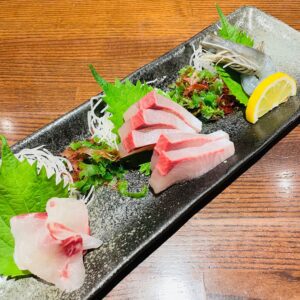
Also, as mentioned earlier, this method is the same as the Japanese ordering food at an izakaya. Many Japanese people use the words “Moriawase (platter)” and “Kyo no Osusume (today’s recommendations)” to order. Therefore, it is accepted in the izakaya without any problem. Even if you don’t speak Japanese, if you order using the Japanese words “Moriawase (platter)” and “Kyo no Osusume (today’s recommendations),” the izakaya waiters/waitresses and Japanese customers will be happy to accept you.
Negative
The problem with the “Moriawase (platter)” and “Kyo no Osusume (today’s recommendations)” ordering methods is that you don’t know what’s coming out. You don’t see the price because you need to read the menu.
Undoubtedly, seafood will come out in the “sashimi platter.” However, you do not know what kind of meat, seafood, or vegetables by “Yakimono Moriawase (roasted food platter),” “Tempura Moriawase (platter),” or “Agemono Moriawase (fried food platter).” It may contain all meat, seafood, and vegetables.
However, even Japanese people do not know what is included when ordering by “Moriawase (platter).” Looking forward to what’s coming out is wise.
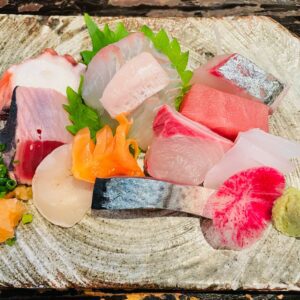
I want people who go to izakaya to try various foods, but if you have any foods you don’t like, be sure to tell waiters/waitresses in advance, as mentioned above.
Ordering without reading the menu means ordering without knowing the price. Of course, if you ask waiters/waitresses, they will tell you, but if waiters/waitresses do not speak a foreign language, you will not know the price after all. In that case, even if you can’t read Japanese, you can often read the price part (number part) written on the menu, so you have to order by imagining the price level. Unfortunately, it’s still inconvenient if you can’t read the Japanese menu.
However, you will rarely be charged a surprisingly high price due to the low prices in Japan itself and the fact that few izakaya menus are expensive. However, as will be described later, although it is infrequent, you should be aware that high-end izakaya may charge a large amount of money.
Solution 3
Solution 3 is to ask other customers. Or you can order by pointing to different customers’ food.
Other guests at izakaya may not be able to speak a foreign language. However, some customers will kindly teach you even if they don’t speak a foreign language. Of course, unfriendly or shy people may not tell you. Of course, this depends on the other customer.
I think the real charm of traveling abroad is communication with the locals. Asking other customers may help each other talk. Not being able to read the Japanese menu is an opportunity to talk with other customers, so I would like you to talk to other customers actively.
It’s easy to order by pointing to other customers’ food because you can see the food’s appearance and the menu with photos. However, many don’t feel good about being stared at by other guests when eating. It is a violation of etiquette to see other guests or food requested by other guests, so be careful.
I would like you to combine Solution 2 as well as Solution 3. First of all, it is probably the best way to order if you can’t read the Japanese menu, asking for 2-3 types of “Moriawase (platter)” and “Kyo no Osusume (today’s recommendations)” and asking other customers to order a single item.
Solution Extra edition
You can also use Google Lens to read the Japanese menu. While traveling abroad, I have tried it on the foreign language menu several times. Still, I can only translate better than not using it.
Also, I tried translating the Japanese menu into a foreign language using Google Lens in Japan. Many of the izakaya menus have their names for the dishes, so the automatic translator cannot fully understand them. It is enough to use Google Lens to understand the menu a little. Still, as I used it in a foreign country, it was better than not using it.
I would like you to combine Solution 2 as well as Solution 3. First of all, it is probably the best way to order if you can’t read the Japanese menu, asking for 2-3 types of “Moriawase (platter)” and “Kyo no osusume (today’s recommendations)” and asking other customers to order a single item.
